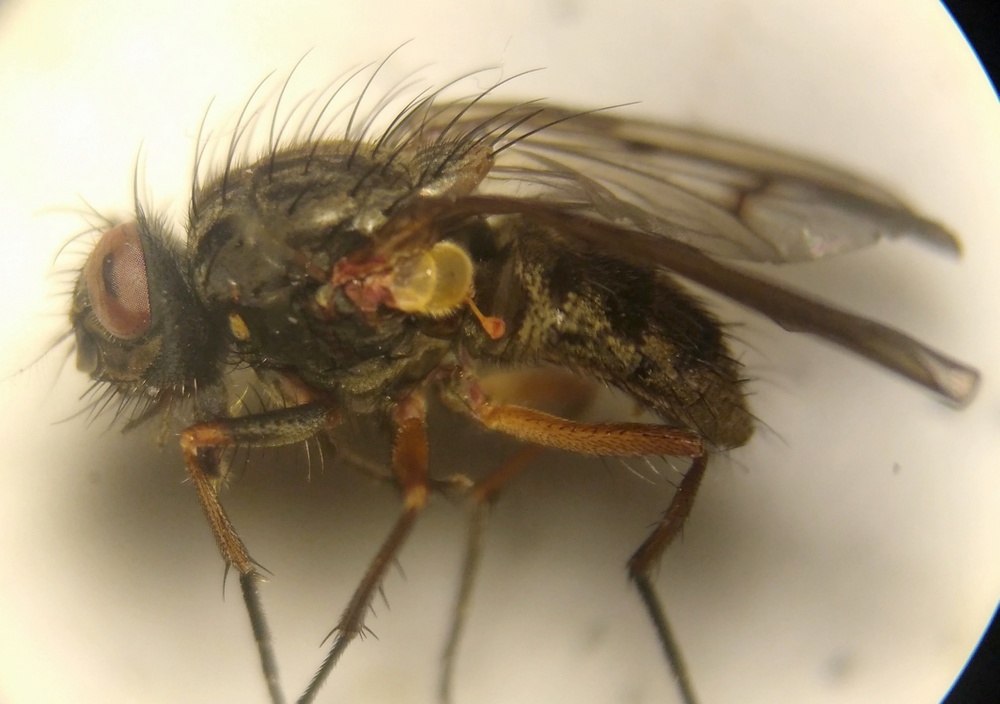Hi Ray.
I'm still using
Davies, L., 1968 A Key to the British Species of Simuliidae (Diptera) in the Larval, Pupal and Adult Stages. Scientific Publication, No 24. 126pp, Freshwater Biological Association.
The nomenclature is a bit out of date, but it manages most IDs OK, excepting those species more readily separated by chromosomes or DNA. (I regularly end up with "species group" IDs.)
If you can't get hold of a copy of the key, and can't find anyone better placed to do the IDs, I'll happily have a look at them.
Cheers
Tony
Thanks Tony,
I 'd come across the Davies book but thought that after all this time there may have been a new version! It's only about £12 so I'll get a copy. If I have problems I'll send them to you!
Ray
Sorry Tony - the £12 one is Smarts 1944 version! The Lewis version is a little more expensive
In 1998, Jon Bass wrote an updated key to larvae and pupae (FBA Scientific publication no. 55), but AFAIK there's no updated key to adults.
Tried out the panorama function that I didn't know existed in my photo editing software. It works rather well, so I now have an image of the whole beast.
Thanks for the tip Tony.
Now the challenge is to work out why I didn't think they were Helina and what I was getting wrong, having taken them through the generic key several times! I found another Helina on the same site/day and had no problem getting an ID I was confident in (H. evecta).
Whilst I'm a novice with flies, having only recorded about 250 species so far, I'm not a novice with keys, but I do find that key challenging!
BTW, was my interpretation of the bristles correct?
I feel your interpretation of the bristles was OK, but I confess that I don't always find identifying these bristles easy.
It can be tricky with Helina - they do sometimes have posterodorsals on the hind tibia which look a bit like Phaonia, and the pre-alar is not always very strong, but it looks like your specimen has 2 + 2 sternopleurals (katepisternals), which is uncharacteristic (if it occurs at all) in Phaonia.
It does indeed have 2 + 2 sternopleurals. Thanks for the advice - I'll bear this in mind in the future.
I'll update once I've had chance to look again at the specimens.
All keyed out nicely as Helina duplicata (now reversio), once I got past 13/28 of Fonseca's Phaoniinae key. Thanks to Tony for the pointer and advice, and Howard who contacted me off forum.
I guess it all comes down to the interpretation of those posterodorsals being "much longer than the greatest depth of tibia". Clearly this is not the same as "clearly longer" (which mine are). I'd have more confidence if the posterodorsal length / max tibia width ratio was quantified in the key.
Many muscids can, with experience, be assigned easily to a genus without resort to a genera key. Phaonia and Helina can look very much alike; the distinguishing feature is the presence in Phaonia of a strong posterodorsal on the apical third of the hind tibia. This bristle is lacking in Helina. Posterodorsals on the basal third of the hind tibia are irrelevant here.
Hi Joshua,
I have just uploaded a digital scan of the British Bibionidae handbook you refer to at: https://www.researchgate.net/publication/356835849_Family_Bibionidae
Unfortunately, it is not a very high res scan - my high res scanner has just stopped talking to me! If I can re-establish communication I will put a high res scan up.
The handbook is quite old now but no new species have been added. John Skarveit has synonymised B. edwardsi on the grounds that he found mixed populations of B. varipes in Scotland with different coloured hairs on the thorax. So that is one less species. A number of people have found couplet 13 tricky (to be honest its not very easy) ending up with B. varipes as an id when in fact most specimens are the common B. lanigerus. Good luck.
Hi Richard,
Thank you very much for you help. I've downloaded the key and it will be instrumental in going through the specimens I've got. I shall be looking forward to getting into them!
I've swept the Pherbellia almost all this last month. Seemed particularly abundant in grass near a small stream (NVC M27 Filipendula mire) but that doesn't sound at all like your habitat. Maybe it's just everywhere!
Ali
The males of S. pumilum (I believe there has been a gender correction to the name) has a number of long, stiff bristles on the underside of the front femur near the base. I cannot see these on your picture, and I think they would perhaps be visible if they were there. See figure 166 in Fonseca's handbook. Sorry to be so negative - I'm afraid I have no alternative suggestion from your picture.
Thanks Howard, your help is much appreciated. I will run it through the key again and see where I end up! I don’t consider your comments to be negative, I am sure I have the correct genus, the projection on the second antennal segment is very distinctive and points you to Syntormon very early on in the key. I should have time over the holiday to try again!
Antony
I have now had time to run it through Fonseca’s handbook and think I went wrong at the start! The hind tarsi are not simple, they have a pair of claws on the metatarsus. This coupled with a black font coda apart from the extreme apex points to S. denticulatus ( or should that now be denticulatum?).
Many thanks Howard for pointing me in the right direction.
Antony



hey Howard. i got it figured out, the marked seta is a posthumeral seta. the fly has 0+3 intra alar and is a Onesia floralis ;) dorsocentrals are the next row